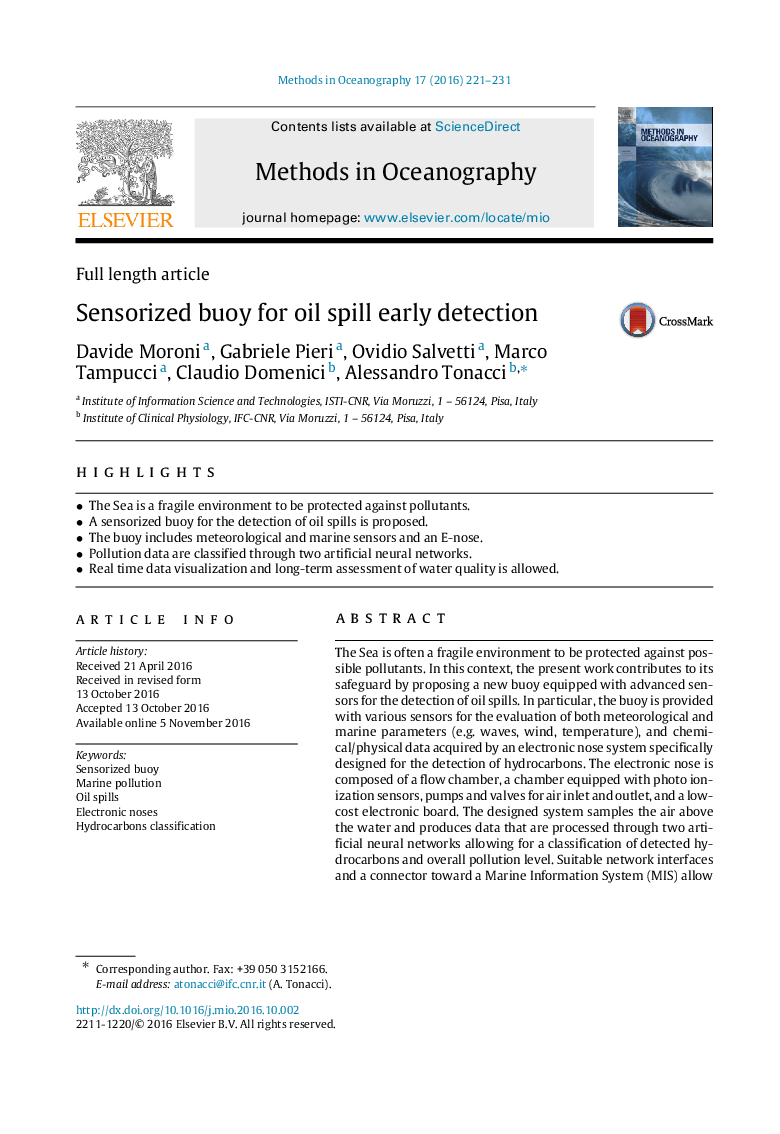| Article ID | Journal | Published Year | Pages | File Type |
|---|---|---|---|---|
| 8060399 | Methods in Oceanography | 2016 | 11 Pages |
Abstract
The Sea is often a fragile environment to be protected against possible pollutants. In this context, the present work contributes to its safeguard by proposing a new buoy equipped with advanced sensors for the detection of oil spills. In particular, the buoy is provided with various sensors for the evaluation of both meteorological and marine parameters (e.g. waves, wind, temperature), and chemical/physical data acquired by an electronic nose system specifically designed for the detection of hydrocarbons. The electronic nose is composed of a flow chamber, a chamber equipped with photo ionization sensors, pumps and valves for air inlet and outlet, and a low-cost electronic board. The designed system samples the air above the water and produces data that are processed through two artificial neural networks allowing for a classification of detected hydrocarbons and overall pollution level. Suitable network interfaces and a connector toward a Marine Information System (MIS) allow both for real-time data visualization and for long-term assessment of water quality.
Related Topics
Physical Sciences and Engineering
Earth and Planetary Sciences
Oceanography
Authors
Davide Moroni, Gabriele Pieri, Ovidio Salvetti, Marco Tampucci, Claudio Domenici, Alessandro Tonacci,
